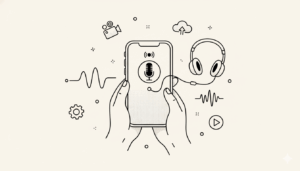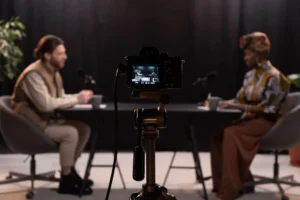Video content is one of the best ways to build meaningful relationships with your audience, which is why YouTube is one of the most popular platforms for creators who want to build a personal brand.
In this guide, we offer a nine-step process to build your personal brand on YouTube. It’s similar to branding any YouTube channel, but with a few caveats.
(Stepping your toes into YouTube for the first time? If so, make sure to check out our complete guide on starting a YouTube channel.)
Step 1: Pick a Niche
A niche provides focus, helping you cater to a specific audience with shared interests, making it easier to attract and retain viewers. It also reduces competition, as you’ll stand out in a specialized field rather than a saturated one.
Failing to pick a niche almost always results in failure. If you try to appeal to everyone, you end up appealing to no one and your audience never grows.
To pick a niche, start by considering your passions and expertise. Choose a topic you’re genuinely enthusiastic about, as this will sustain your motivation over time. Research your chosen niche to gauge its potential audience size and competition. Look for gaps in content or underserved subtopics within the niche, as this can help you find your unique angle.
Once you’ve chosen a niche, consistency is key. Create content that aligns with your niche and appeals to your target audience. Engage with your viewers and build a community around your niche by interacting with your audience on YouTube and other platforms.
Step 2: Create a Visual Aesthetic for Your Channel
Creating a visual aesthetic on your YouTube page establishes a memorable brand identity, making your channel instantly recognizable to viewers. Consistency in colors, logos, and design elements fosters trust and loyalty among your audience.
A visually appealing page also captures attention and encourages viewers to explore your content. Custom thumbnails, a polished banner, an informative channel trailer, and high-quality video presentation make your channel more enticing.
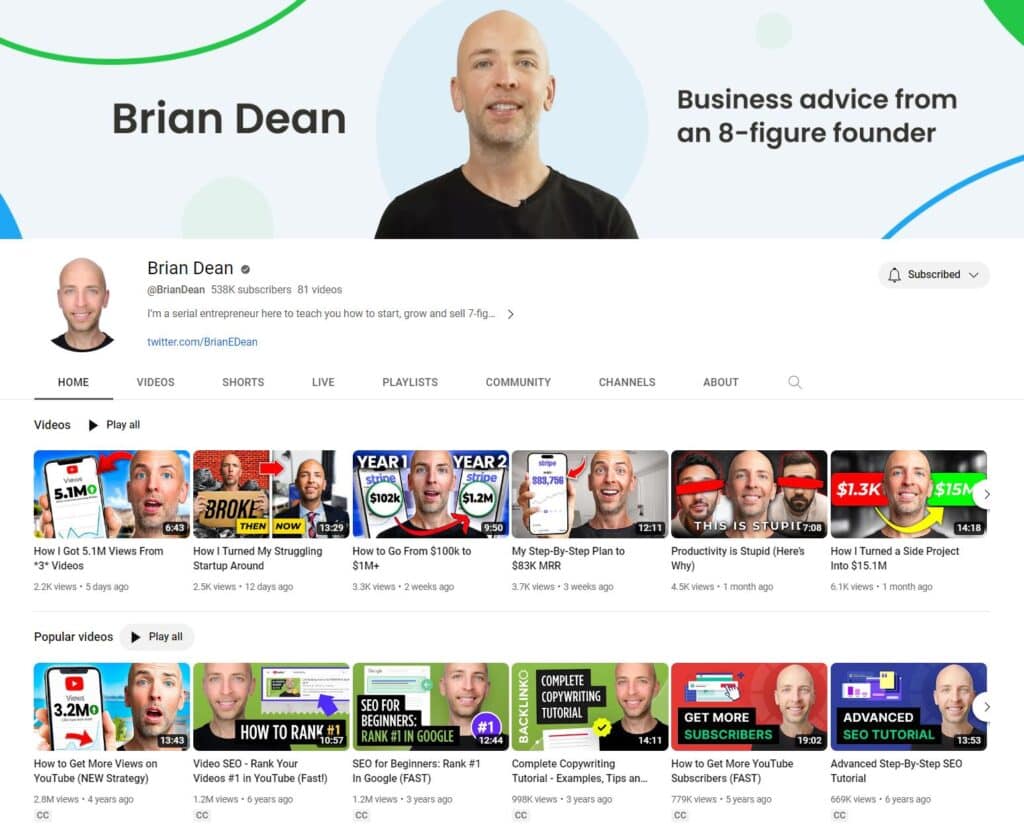
Additionally, a cohesive visual aesthetic helps convey your content’s theme or niche, aiding in target audience identification. It communicates professionalism and dedication, potentially attracting collaborations and sponsorships.
Do the following to create a visually appealing YouTube page:
- Use a high-resolution banner image that represents your channel’s theme.
- Choose a consistent color palette that compliments your content. Use these colors in thumbnails, overlays, and text. Extend these elements into your videos.
- Create eye-catching custom thumbnails with compelling images, legible text, and consistent branding.
- Record and upload videos in high-definition for a professional look.
- Categorize your videos into playlists for easy navigation.
- Write a concise, engaging channel description.
- Use the same fonts, graphics, and logo across your videos and channel.
- Include end screens with subscribe buttons, related videos, and CTAs.
- Add a custom watermark for brand recognition.
Step 3: Use Your Own Name for the Channel
Using your own name when building a personal brand on YouTube establishes authenticity and transparency, as viewers can connect directly with you as an individual. This fosters trust and a deeper connection with your audience.
Your name is also unique to you, making it memorable and easier for viewers to find and remember your channel. It allows for a consistent online presence across various platforms, aiding in cross-promotion and discoverability.
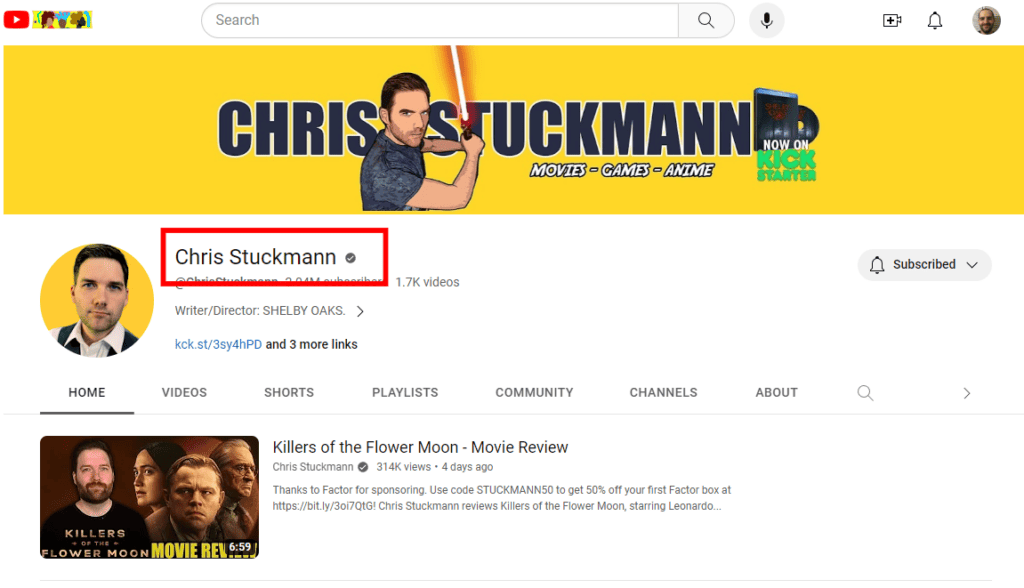
Additionally, using your name gives you the flexibility to pivot your content or expand your personal brand in the future without being tied to a specific niche or topic. It’s versatile and adaptable.
While we think it’s important to use your own name for your personal brand on YouTube, you may decide to use something else. If so, check out our guide on naming your YouTube channel.
Step 4: Use a Headshot for Your Profile Picture
Using your face as your profile picture for a personal YouTube brand humanizes your channel, creating a genuine connection with your audience. Viewers can relate to a person rather than an abstract image, which fosters trust and engagement.
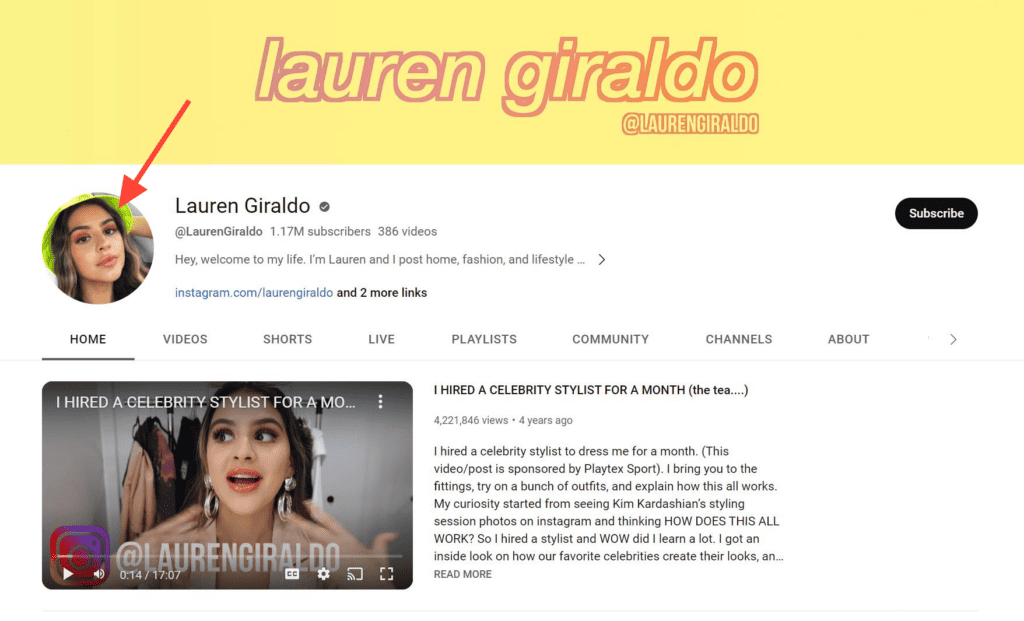
A headshot promotes authenticity and transparency, showing viewers that you stand by your content and are proud to be associated with it. It also establishes you as a brand, making your channel easily recognizable and memorable. Your face becomes the symbol of your content and expertise, contributing to a cohesive online presence.
Step 5: Optimize your Metadata
Metadata refers to chunks of content that the YouTube algorithm analyzes to index your videos and display them to potential viewers. Since YouTube can’t evaluate the actual content of the video, these data points are extremely important to making your videos discoverable.
There are four significant data points:
- Your video’s title
- The first 100 words of the description
- The rest of the description
- Hashtags
It’s important to use keywords in these places. Focus on the words and phrases your audience would use to find content like yours. (The first hundred words of your description is important because Google truncates everything after that, so users won’t see it unless they deliberately expand the description text.)
That said, don’t stuff your titles, descriptions, or hashtags with too many keywords or unrelated keywords. If you try to trick Google, they can penalize you.
Check out this content from a Copper Creek Cuts video. The title and description are packed with keywords for users.
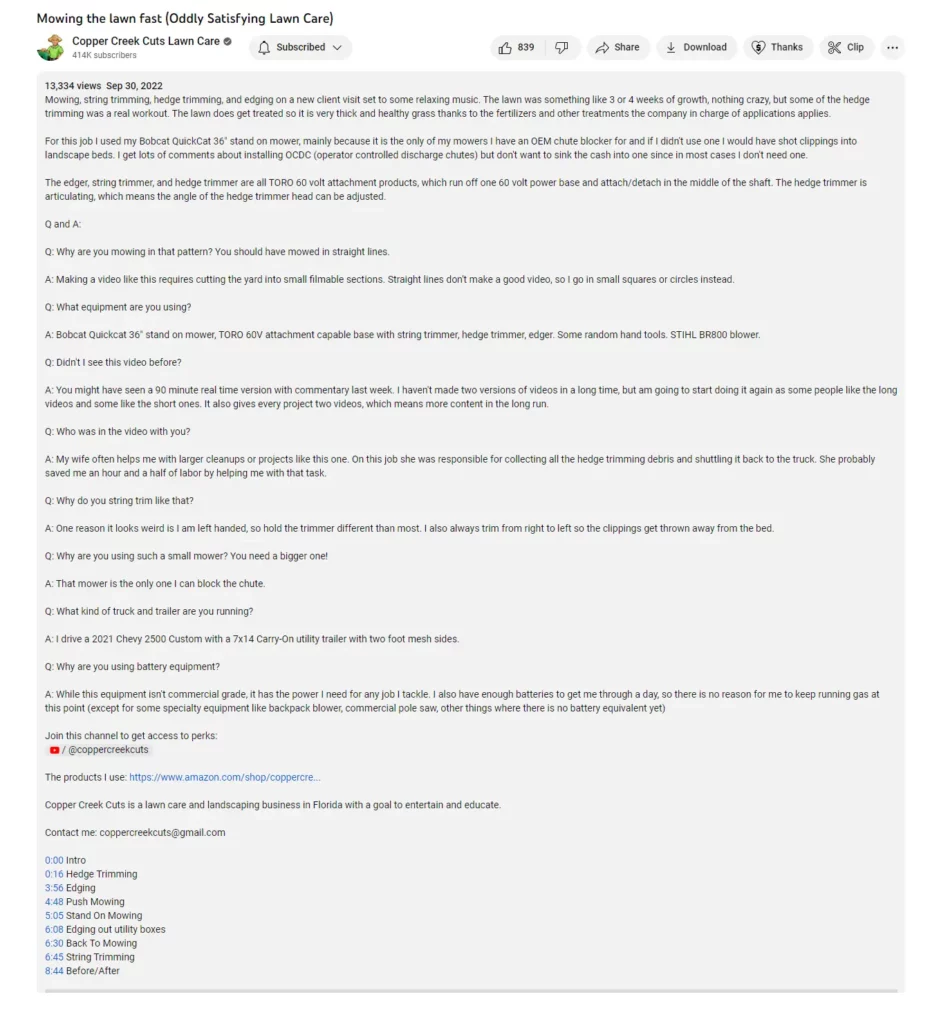
Step 6: Promote Your YouTube Channel
While it’s possible to grow your YouTube channel by just producing videos, it’s usually not enough. Smart creators take a multifaceted approach to building their personal brand by promoting their channel in other places.
- Link to your YouTube videos on social media. Don’t post them on other platforms. You can also share snippets, teasers, or behind-the-scenes content from your YouTube videos on platforms like Instagram, Twitter, Facebook, and LinkedIn. Use relevant hashtags and engage with your followers to drive traffic to your channel.
- If you have an email list, send out newsletters or updates about your latest YouTube videos. Include compelling descriptions and thumbnails to entice subscribers to click through. In your videos, encourage your subscribers to sign up to your list.
- If you have a blog or website, embed your YouTube videos in relevant blog posts. Create dedicated pages or sections on your site to showcase your YouTube content.
- Participate in forums, groups, or communities related to your niche, such as on Facebook or LinkedIn. Share your expertise and subtly promote your YouTube channel when it’s relevant and helpful.
- Use YouTube’s built-in features like end screens and cards to promote your other videos or playlists. Encourage viewers to subscribe and explore your content further.
- Organize your videos into playlists to keep viewers engaged with more of your content. These playlists can also be shared on social media or embedded on your website.
- Consider using paid advertising on platforms like Google Ads or social media to reach a wider audience. Target specific demographics or interests related to your content.
Remember that successful cross-promotion takes time and persistence. Continuously analyze the performance of your promotional efforts and adjust your strategy as needed to maximize the growth of your personal YouTube brand.
Step 7: Collaborate with Other YouTubers
Collaborating with other YouTubers helps expand your audience by tapping into the followers of your collaborators. This cross-promotion exposes your content to a wider demographic and can lead to increased subscribers and views.
Furthermore, collaborations bring fresh perspectives and creative ideas to your channel, making your content more diverse and interesting. It can also introduce you to new skills and knowledge. It also builds credibility by associating your brand with established YouTubers, increasing trust among viewers.
To collaborate effectively, follow these steps:
- Identify compatible creators: Find YouTubers whose content aligns with yours or complements it in some way. This ensures a natural fit for collaboration.
- Reach out: Contact potential collaborators via email or social media. Be clear about your ideas, goals, and the benefits of working together.
- Plan and execute: Coordinate on content ideas, filming schedules, and promotion strategies. Ensure a mutual understanding of the project’s direction.
- Promote together: Cross-promote the collaboration on both channels, encouraging your viewers to check out your collaborator’s content and vice versa.
Step 8: Engage with Your Audience
Engaging with your audience is crucial for building a personal brand on YouTube because it fosters a loyal and supportive community that looks forward to more content. When you actively connect with viewers, it creates a sense of authenticity and trust, making them more likely to subscribe, watch, and share your content.
To engage effectively, start by responding to comments on your videos promptly and genuinely. Show appreciation for positive feedback and address concerns or questions.
Additionally, ask for audience input and feedback, making them feel involved in your content creation process. Host live streams, Q&A sessions, or community polls to interact directly with your viewers. Recognize and shout out loyal subscribers to make them feel valued.
Step 9: Publish Content Consistently
Our last piece of advice is the simplest, but it’s also the most important.
If you want to grow your personal brand on YouTube – or any brand for that matter – it’s important to publish content consistently. No, you don’t have to publish a new video every day. but it’s important to decide on a reasonable schedule and stick to it.
Consistency keeps your audience engaged, fosters trust, and reinforces brand recognition. It signals YouTube’s algorithm that your channel is active and relevant, increasing visibility.
Notice how often MrBeast publishes videos – about two or three each month. His audience can always count on something new soon.
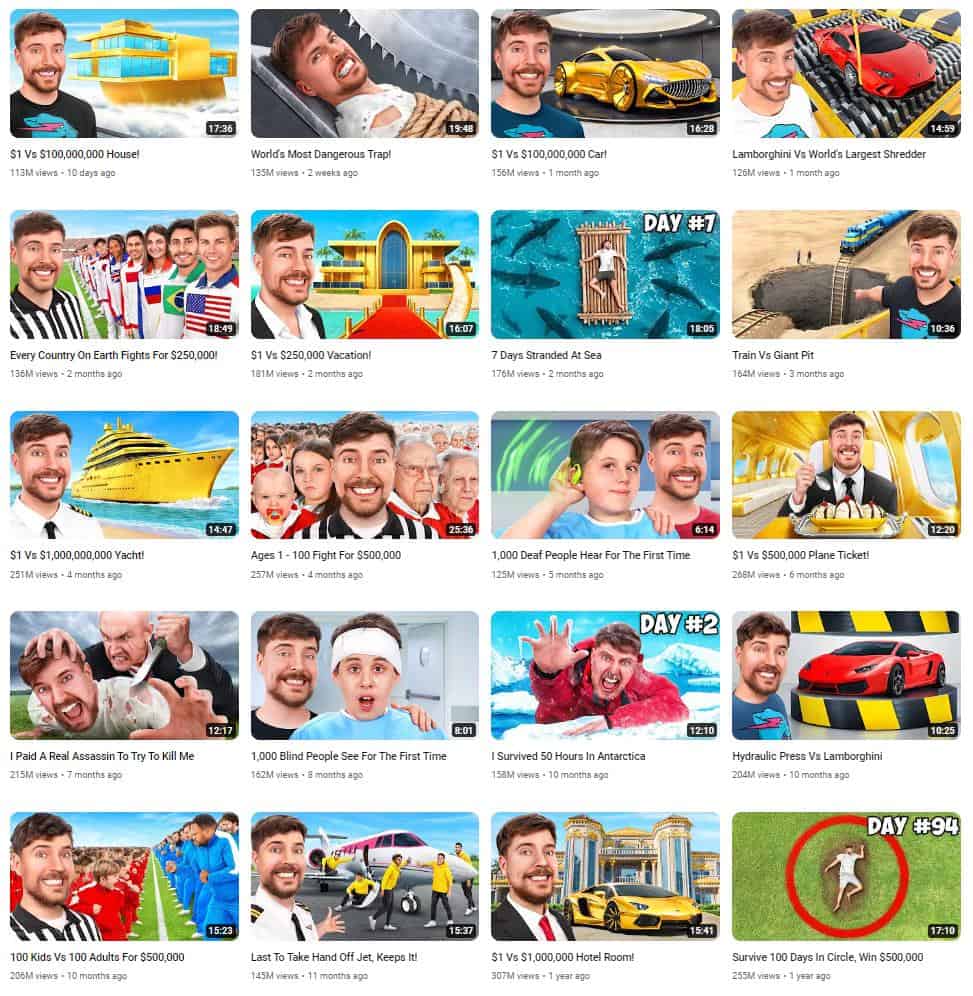
Furthermore, consistency allows you to experiment with content, refine your skills, and adapt to audience feedback, ultimately improving the quality of your videos.It even opens doors to monetization opportunities through ads, sponsorships, and merchandise, as advertisers prefer creators with reliable schedules.
Start Building Your Personal Brand on YouTube Today
Like any marketing endeavor, the best time to start was yesterday, but the second best time to start is today. The sooner you take steps to build your personal brand on youtube, the sooner you will enjoy the results of a large, engaged audience.
Do you have a personal brand on YouTube? What steps did you take to grow your audience and produce amazing content?
